
Concept explainers
(a)
Interpretation:
The detailed mechanism for the given reaction is to be drawn, and the major product is to be predicted.
Concept introduction:
Lithium aluminium hydride (LAH) or
The chemical behaviour of deuterium (
Answer to Problem 17.43P
The detailed mechanism for the given reaction is

The major product of the given reaction:
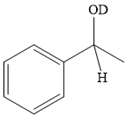
Explanation of Solution
The given reaction is
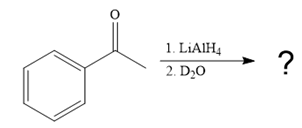
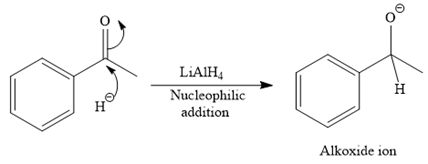
This alkoxide ion then attacks the deuterium (
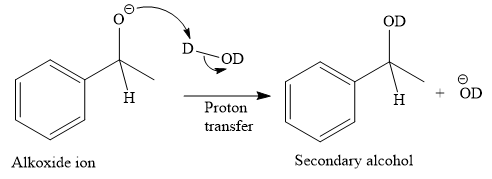
Thus, the final product of the given reaction is the secondary alcohol shown below:
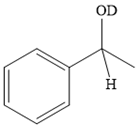
A ketone, when treated with a reducing agent such as Lithium aluminium hydride (LAH) or
(b)
Interpretation:
The detailed mechanism for the given reaction is to be drawn, and the major product is to be predicted.
Concept introduction:
Lithium aluminium hydride (LAH) or
The chemical behaviour of deuterium (
Answer to Problem 17.43P
The detailed mechanism for the given reaction is

The major product of the given reaction:
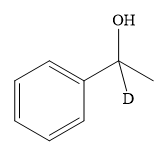
Explanation of Solution
The given reaction is
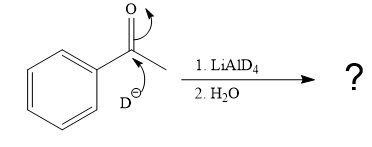
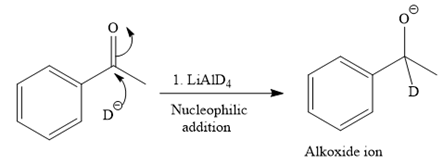
This alkoxide ion then attacks the proton (H) of water, which is the solvent used in the next step.
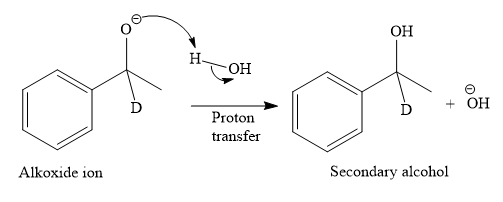
Thus, the final product of the given reaction is the secondary alcohol shown below:
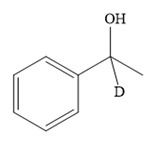
A ketone, when treated with a reducing agent such as Lithium aluminium hydride (LAH) or
(c)
Interpretation:
The detailed mechanism for the given reaction is to be drawn, and the major product is to be predicted.
Concept introduction:
Lithium aluminium hydride (LAH) or
The chemical behaviour of deuterium (
Answer to Problem 17.43P
The detailed mechanism for the given reaction is

The major product of the given reaction:
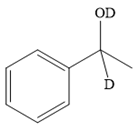
Explanation of Solution
The given reaction is
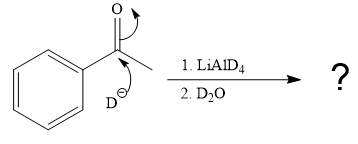
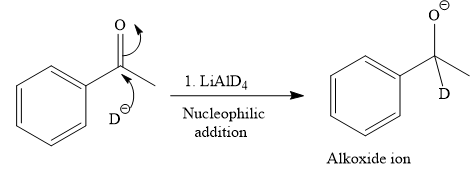
This alkoxide ion then attacks the deuterium (
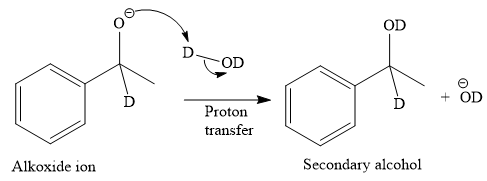
Thus, the final product of the given reaction is the secondary alcohol shown below:
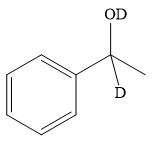
A ketone, when treated with a reducing agent such as Lithium aluminium hydride (LAH) or
Want to see more full solutions like this?
Chapter 17 Solutions
EBK ORGANIC CHEMISTRY: PRINCIPLES AND M
- Calculate the pH and the pOH of each of the following solutions at 25 °C for which the substances ionize completely: (a) 0.000259 M HClO4arrow_forwardWhat is the pH of a 1.0 L buffer made with 0.300 mol of HF (Ka = 6.8 × 10⁻⁴) and 0.200 mol of NaF to which 0.160 mol of NaOH were added?arrow_forwardDetermine if the following salt is neutral, acidic or basic. If acidic or basic, write the appropriate equilibrium equation for the acid or base that exists when the salt is dissolved in aqueous solution. If neutral, simply write only NR. Be sure to include the proper phases for all species within the reaction. NaN₃arrow_forward
- A. Draw the structure of each of the following alcohols. Then draw and name the product you would expect to produce by the oxidation of each. a. 4-Methyl-2-heptanol b. 3,4-Dimethyl-1-pentanol c. 4-Ethyl-2-heptanol d. 5,7-Dichloro-3-heptanolarrow_forwardWhat is the pH of a 1.0 L buffer made with 0.300 mol of HF (Ka = 6.8 × 10⁻⁴) and 0.200 mol of NaF to which 0.160 mol of NaOH were added?arrow_forwardCan I please get help with this.arrow_forward
- Determine if the following salt is neutral, acidic or basic. If acidic or basic, write the appropriate equilibrium equation for the acid or base that exists when the salt is dissolved in aqueous solution. If neutral, simply write only NR. Be sure to include the proper phases for all species within the reaction. N₂H₅ClO₄arrow_forwardPlease help me with identifying these.arrow_forwardCan I please get help with this?arrow_forward

 Organic Chemistry: A Guided InquiryChemistryISBN:9780618974122Author:Andrei StraumanisPublisher:Cengage Learning
Organic Chemistry: A Guided InquiryChemistryISBN:9780618974122Author:Andrei StraumanisPublisher:Cengage Learning

